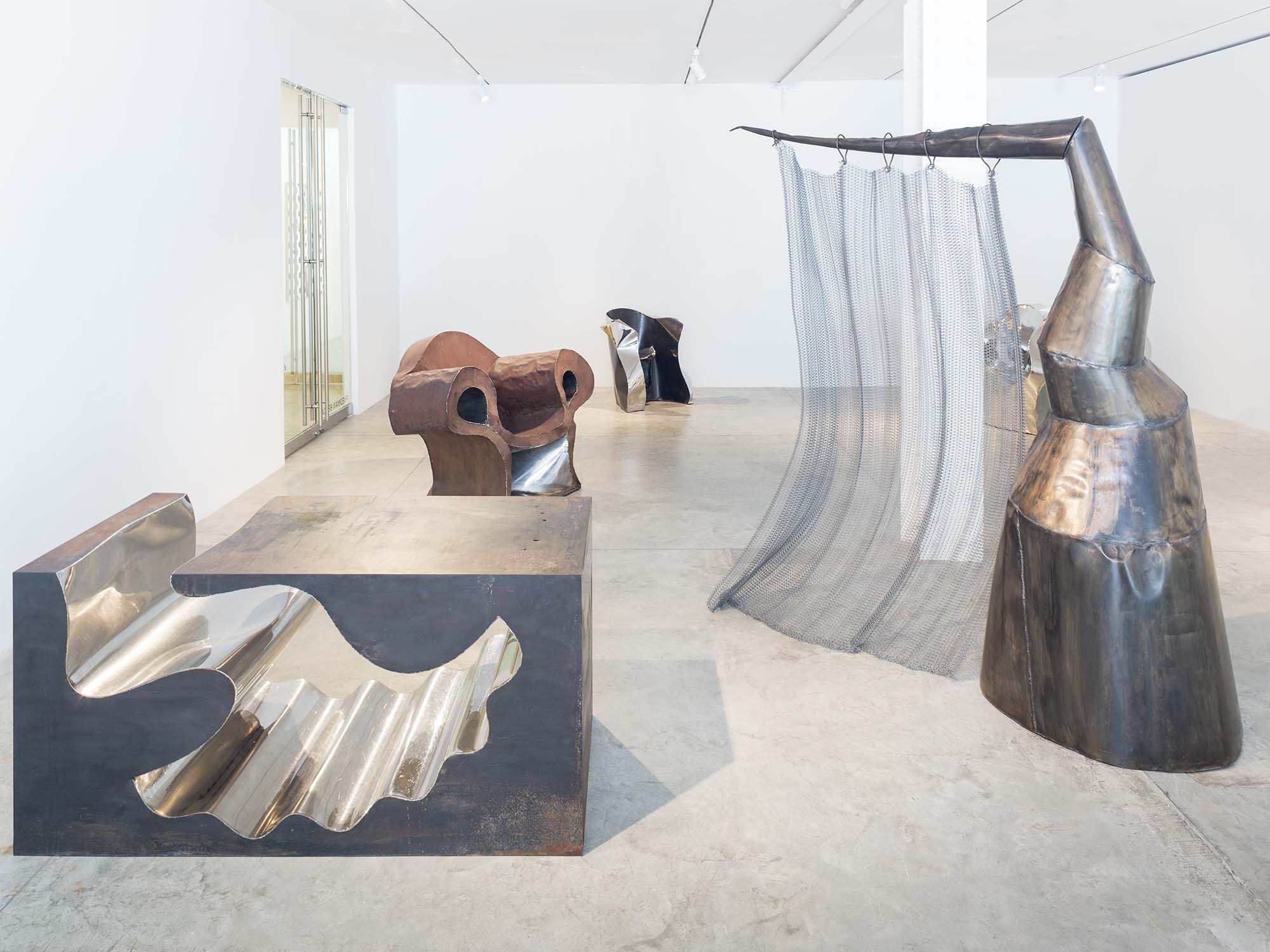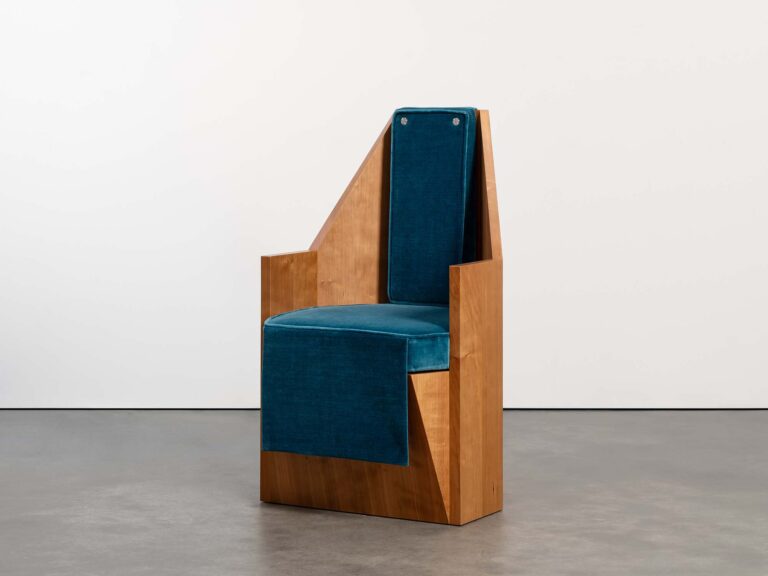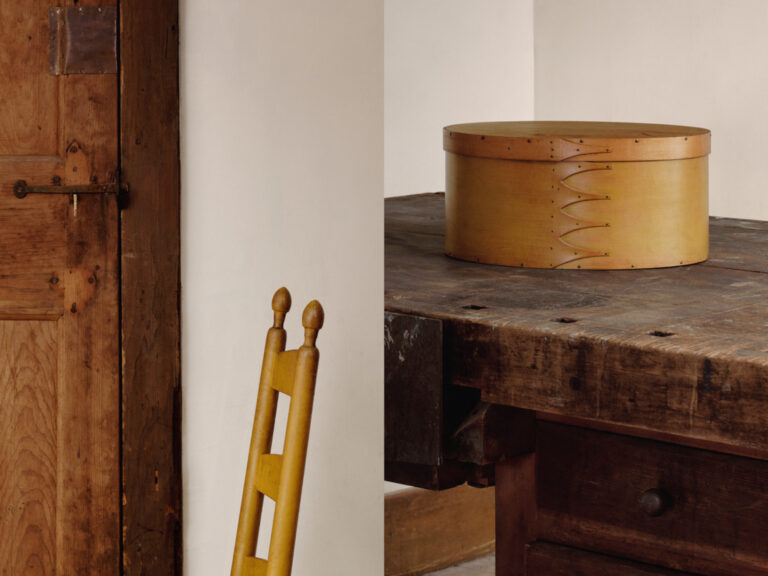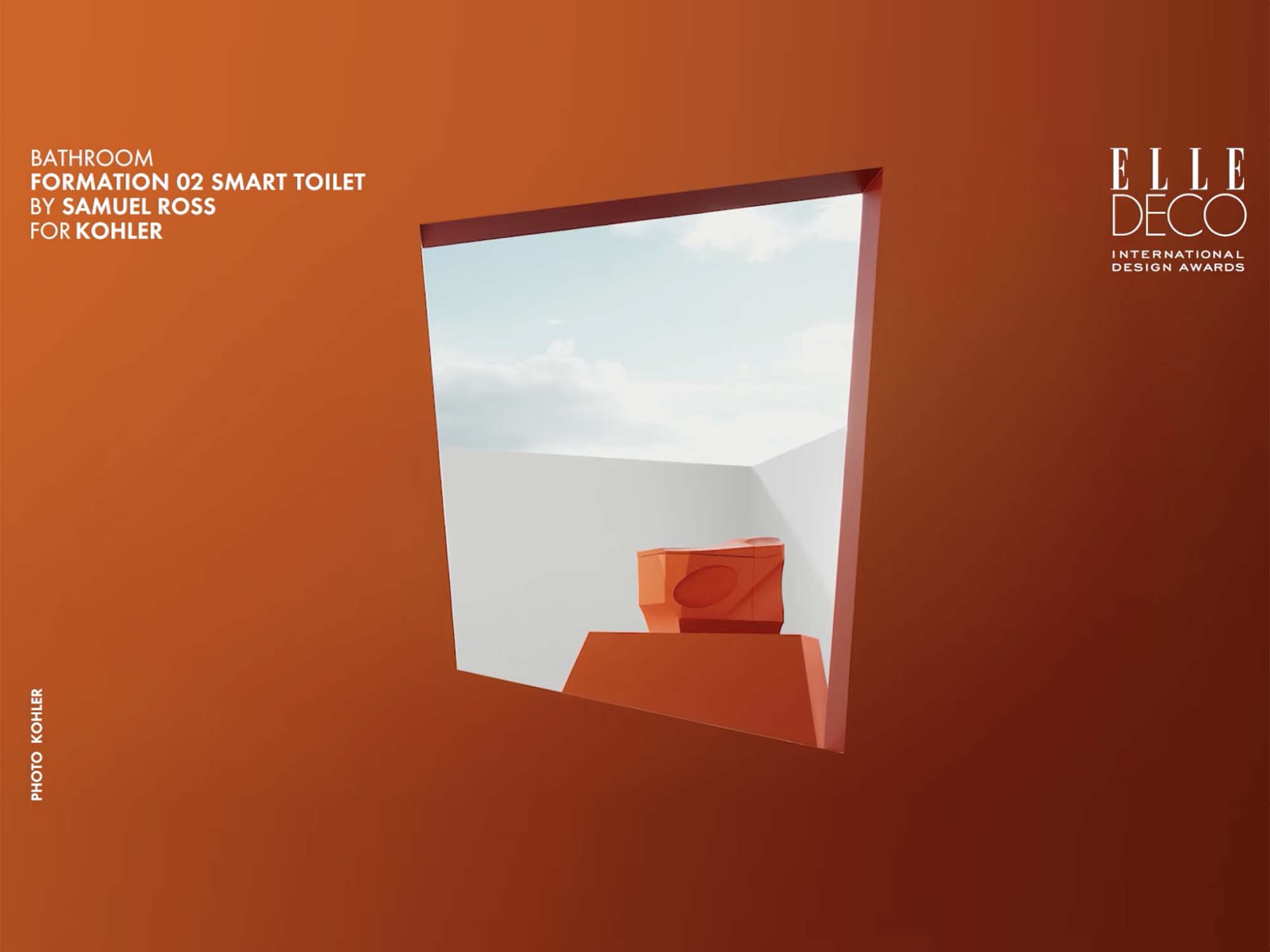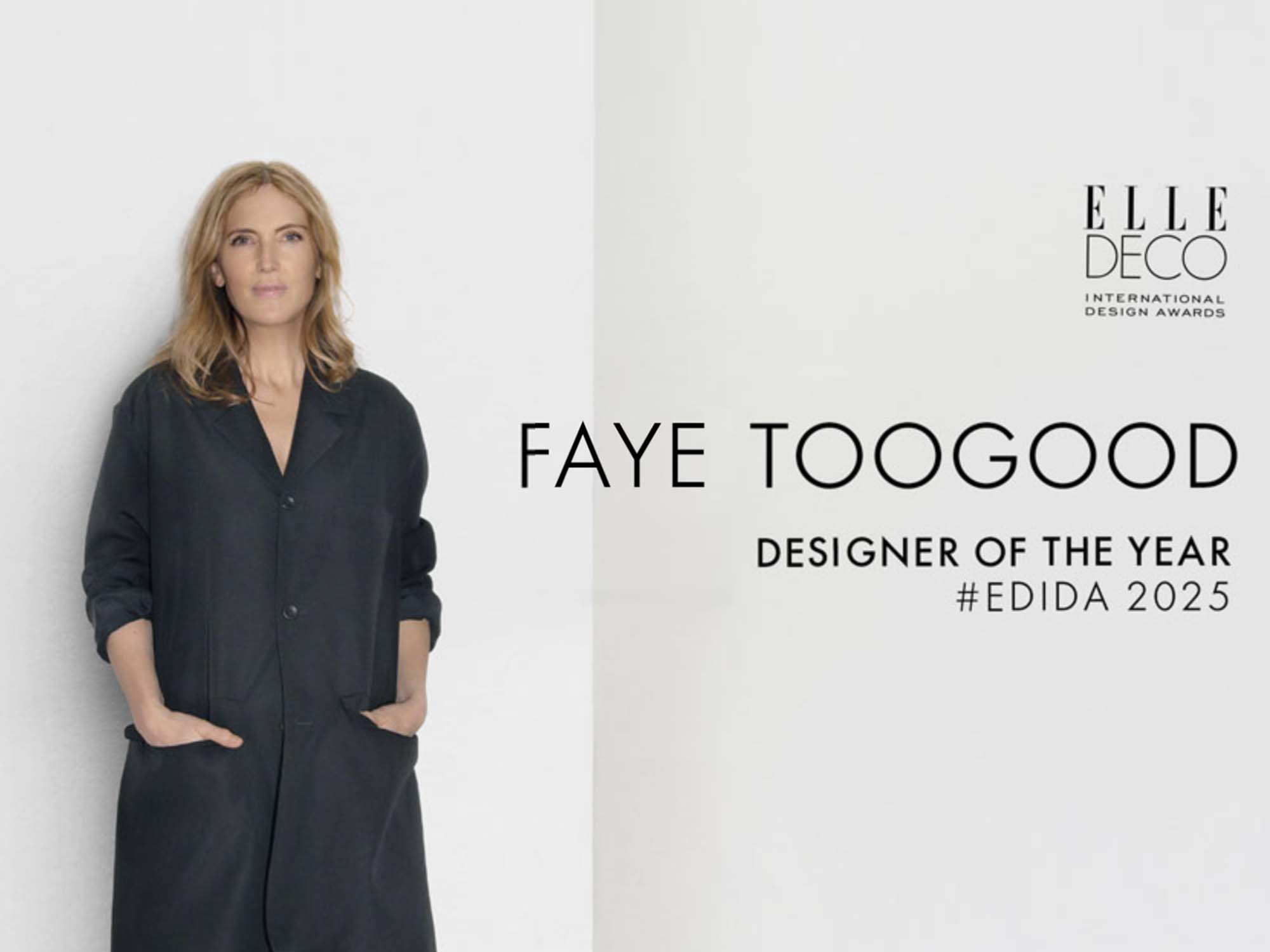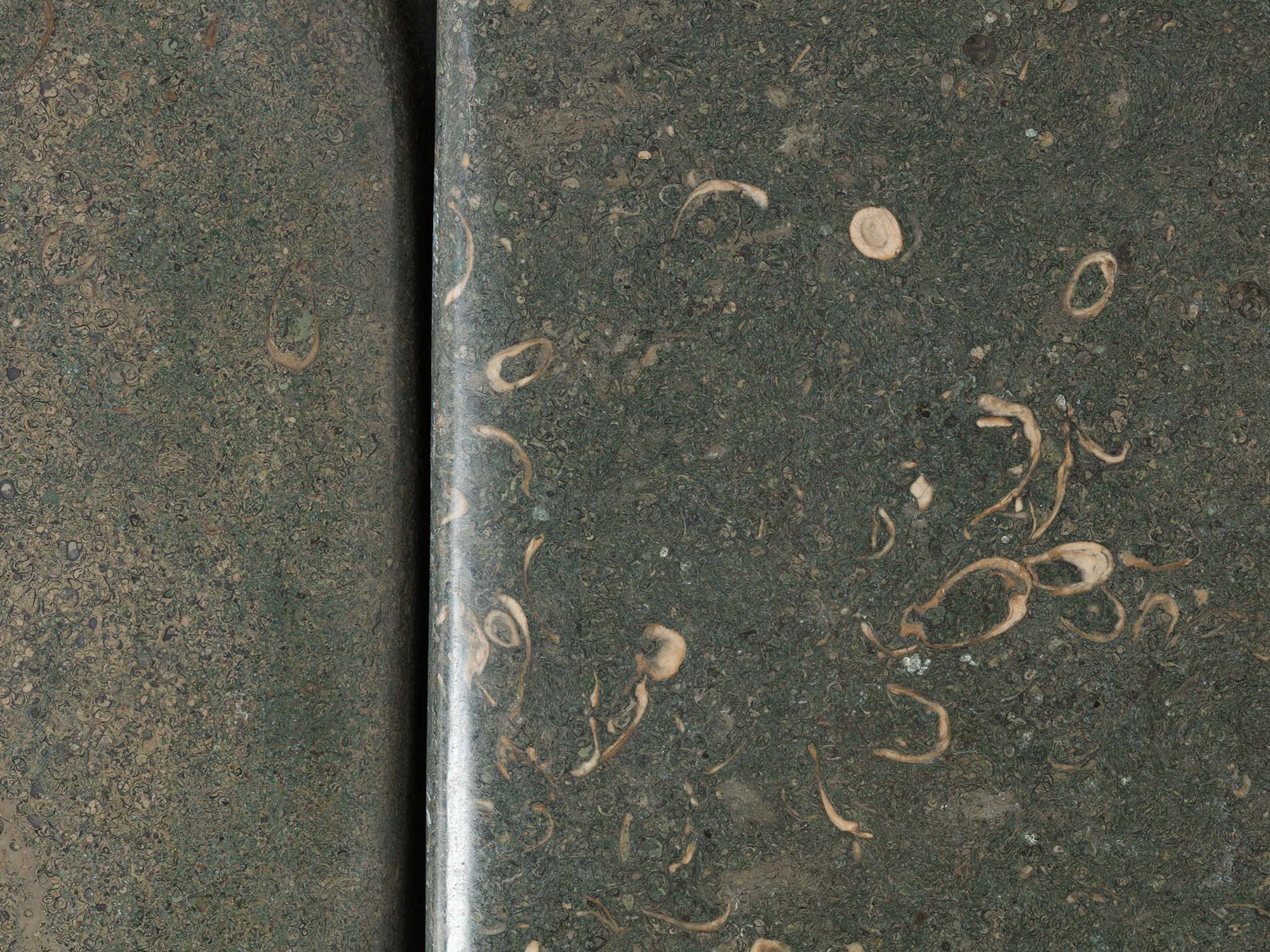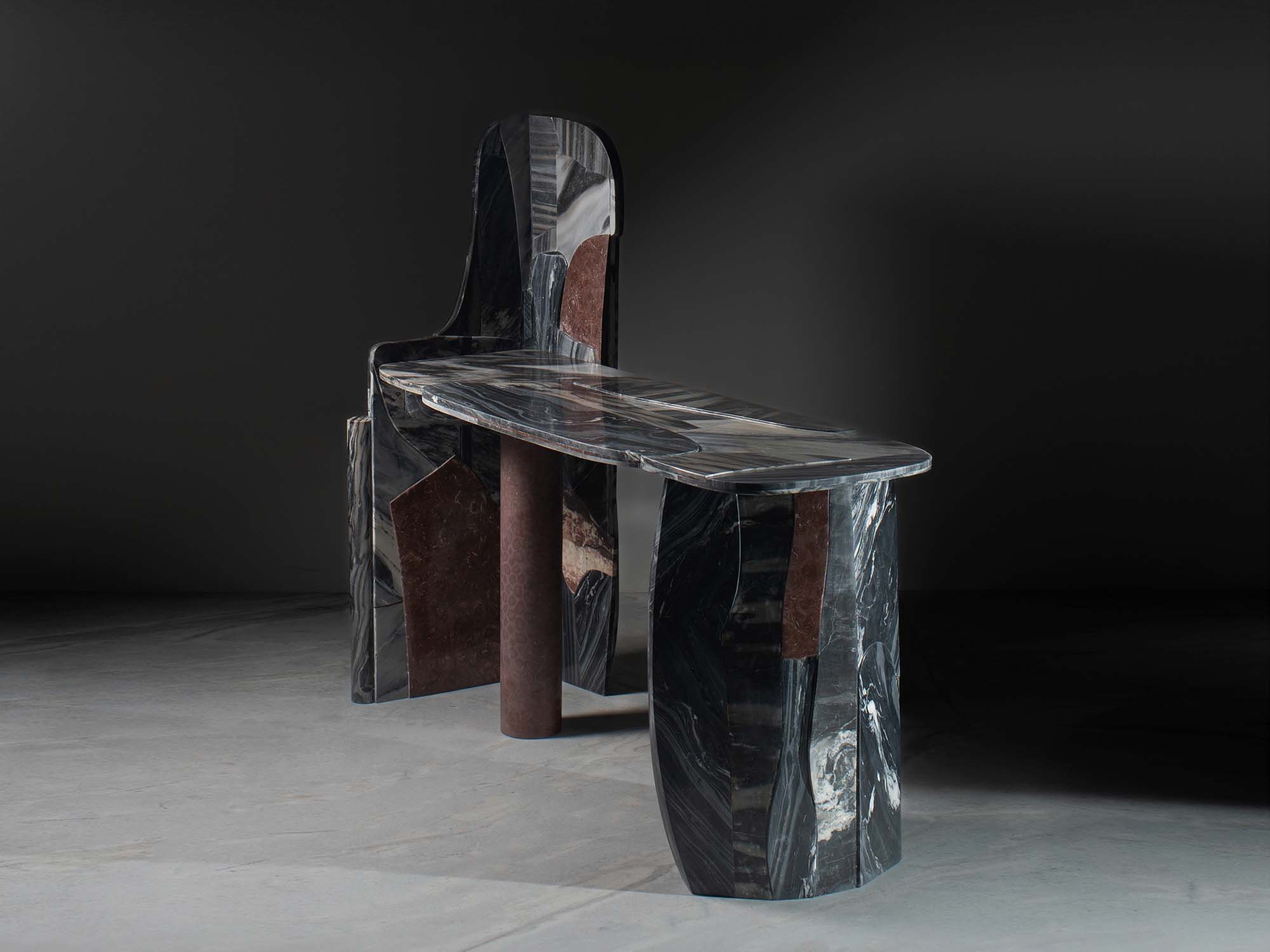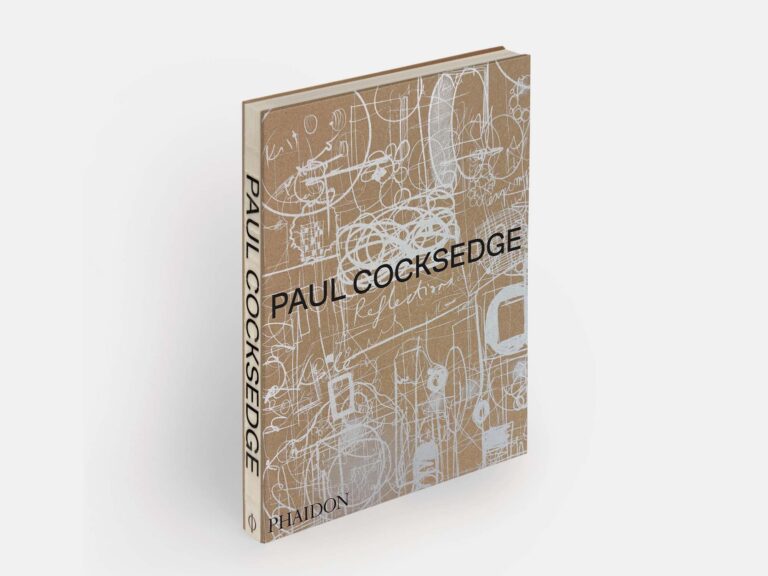By Glenn Adamson
How deep is the ocean? How high is the sky? In Ron Arad, we have a figure of tremendous range, who found his comfort zone in the very act of extending his reach. Fishes & Crows is the first focused gathering of his early work since 1989 – the year of his exhibition at Vitra Design Museum, Sticks and Stones, a project that this one echoes down to its title. For reasons this essay will go on to explain, these objects serve as a highly relevant template for cutting-edge design today.
This is not to say, however, that his early work wasn’t completely of its era. The most significant critic to write on Arad in the early stage of his career, Deyan Sudjic, explored the “rough and ready quality that chimed well with the grittiness of youth styles of the time,” from punk clothing and album covers to dystopian science fiction.[1] Sudjic also traced in detail Arad’s jousting relationship with the period’s boom economy, and his alliances with other key figures of the time, such as his peers and collaborators Neville Brody, Nigel Coates, and Danny Lane, and one of Arad’s early patrons, Rolf Fehlbaum, Chairman of Vitra.
The only thing that hasn’t aged well in Sudjic’s writings on Arad is their preoccupation with category: the question of how to place him in relation to sculpture, craft, and design. In the 1980s, the boundaries of those categories were still well-policed, and the thing that was initially most striking about Arad was his flagrant disregard for that kind of territorialism. Even as prescient a critic as Sudjic could not have predicted what was so exceptional about Arad would become a rule unto itself; so he settled for the formulation that Arad was “an artist whose subject is design.”[2] In retrospect, this verdict seems slightly misguided. What Arad really did was to expand the possibilities for design, by developing a modus operandi that was grounded in autonomous production, and focused primarily on material experimentation. This distinguished him sharply from the other main developments in progressive design in the 1980s, which tended to emphasize stylistic concerns: the sophisticated postmodernism of Memphis, the glib mannerism of Phillippe Starck, the cartoon classicism of Michael Graves. As these image-conscious approaches fell out of fashion, hard, Arad’s process-based approach rose to dominance. The design scene of today is largely populated by figures working from his playbook of formal invention through self-invented processes.
One of the secrets of Arad’s success in these years was the way that he maintained the stance of a belligerent outsider, while remaining very much in the thick of things. For the exhibition Nouvelles Tendances for the Pompidou Center in 1987, he installed a conveyor belt for the purpose of crushing up furniture – a hilariously overstated statement of disregard for the past. The design world at the time had a small footprint, and it’s tempting to read such gestures as mainly about clearing space for him to maneuver. Yet Arad did have precursors and peers, and was responded to their work in nuanced ways. In addition to those in the so-called “creative salvage” movement in London – the aforementioned Danny Lane, as well as Tom Dixon and Mark Brazier-Jones – there was Forrest “Frosty” Myers in New York, who started bodging industrial materials into sculptural handmade furniture as early as 1981. But the most Gaetano Pesce, the Italian-born maestro of avant gardism. In Italian Fish (1989), Arad paid explicit homage to him; but in truth, much of what he made in the late 1980s had at least a bit of Pesce in it. The two shared a proclivity for approximate craftsmanship, in which the form is realized with far more vigor than precision. Certainly there were big differences between them. Pesce used mainly plastics and Arad mainly steel, Pesce’s sensibility more humanist and Arad’s more abstract, but their results were similar in their unpredictable, expressionist energy.
[1] Deyan Sudjic, Ron Arad: Restless Furniture (New York: Rizzoli/Blueprint, 1989), p. 33. See also Sudjic, Ron Arad (London: Laurence King, 1999).
[2] Sudjic, Ron Arad: Restless Furniture, p. 20.
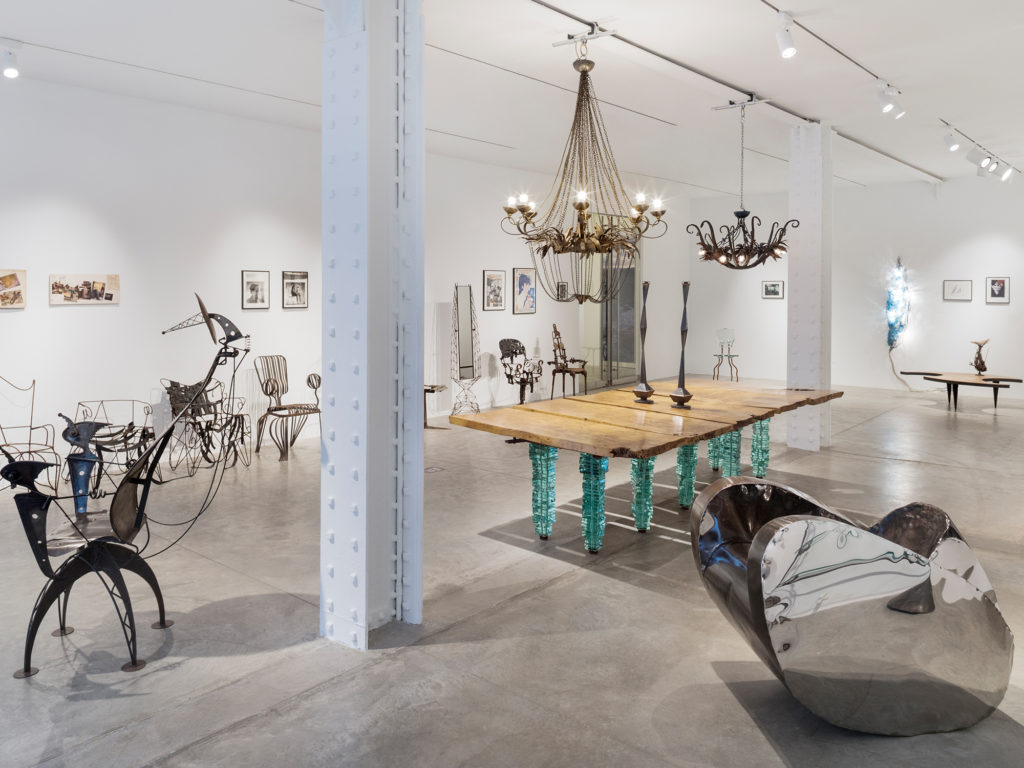
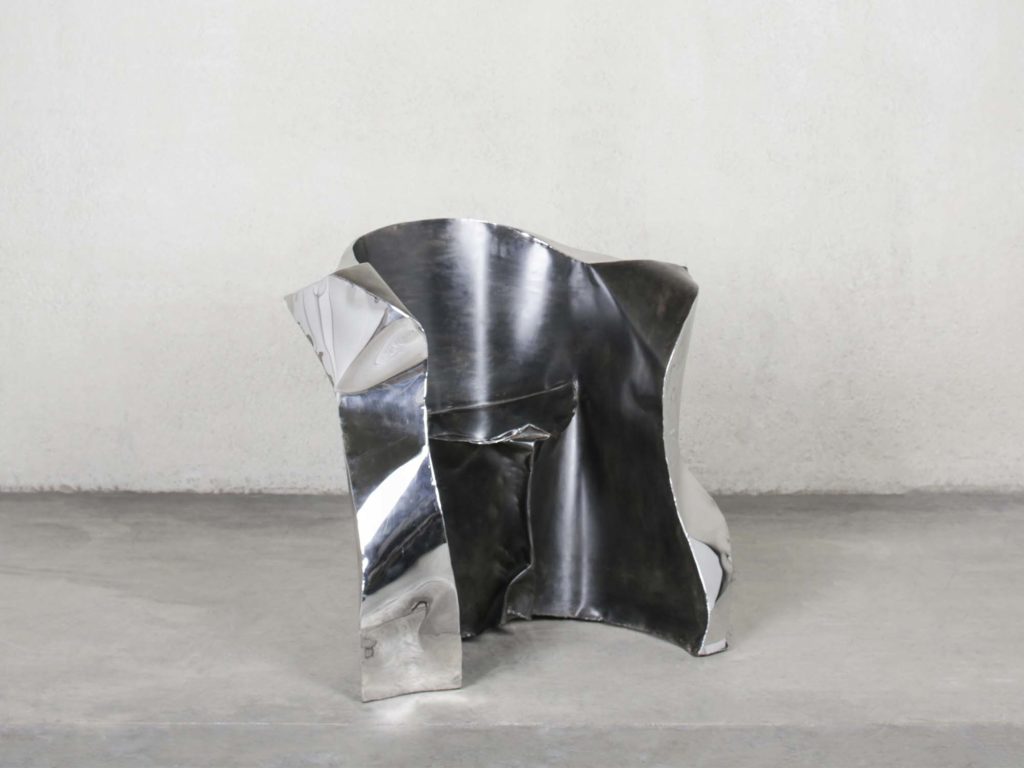
Though one can draw these correspondences to other designers, Arad himself had a very different role model in mind: “I’d read Marcel Duchamp’s biography: the beginning bit where he says he never had to worry about money.”[3] And indeed, his first designs were specifically based on the Duchampian “assisted readymade,” or altered found object. It was a strategic decision: Arad had limited financial resources, but easy access to the avalanche of industrial remnants that characterized Britain at the time. The best-known of his “blind dates with an object,” as Arad likes to say, is the Rover Chair – the leather seat of an old-fashioned automobile, complete with its original lever-activated reclining mechanism, held within a custom-built metal frame. In the same year of 1981, Arad realized his Puch Stool incorporating the leather seat of an Austrian-built scooter, and a series of Aerial Lights, using a car antenna and an existing electronic remote-control system.
Perhaps the most compelling of these readymade works came a couple of years later with the Concrete Stereo (1983), in which factory-made audio components are sunk into wet concrete: “as it was setting I could actually arrange the thing casually, as if it wasn’t arranged.”[4] Fewer than ten were made, each one unique; today they are among his most sought-after works, with examples at the V&A and SFMoMA. The Concrete Stereo has often been interpreted as a gesture of apocalyptic ruination – something out of the films Mad Max (1979) or Blade Runner (1982). For Arad, though, the appeal of it was completely the opposite. He’d discovered a means of assembly that afforded the possibility of intuitive composition. This was something he had sought from the get-go, as the name for his workshop and showroom One Off indicates. But initially, his dependence on the readymade limited the range of his expression to ad hoc aesthetics.[5] The Kee Klamp scaffolding system used in the Rover Chair and other early works (customized beds and cabinets that earned Arad his living in the early years) was modular and flexible, but also imposed its own character on the results. By freeing himself from appropriated materials, Arad would be able to completely define his own sensibility.
Arad had made an abortive attempt in this direction when he first set out: his Transformer seating (1981). These were made using recent medical technology, originally developed to make stretchers for people with spinal injuries. It consisted of a vinyl bag filled with Styrofoam pellets, which can take the impression of anything (including a body) and then be vacuum-hardened. While the technology did work, it did not produce a satisfactory aesthetic result – Sudjic describes the Transformers as “a disturbing image… like a mummified body,” and Arad abandoned it. It was not until 1985, shortly after the Concrete Stereo, that he made the key leap to hand-shaped metal. This shift to a more generative mode of making unleashed Arad, inaugurating an equally generative period of creativity. The found object was expunged in favor of this freeform experimentation. This in turn opened up new possibilities with regard to scale. Beginning with his One Off showroom in Neal Street – a collaged cavern-like space made in a sustained campaign of improvisation – Arad re-engaged with his original discipline of architecture. Even in his furniture, he sought out forming techniques that could unfold or extend spatially, escaping the confines of standard joinery or other established construction.
Fishes and Crows concentrates on this second phase of Arad’s career. It can be seen as beginning with the Cone and Horns series. In both cases, he retained the character of the flat sheet metal, either curling it round into a taper, or cutting and bending it. The Cone series exemplifies Arad’s mobility with regard to scale; it was derived from an enormous cornucopia-like handrail that Arad had been obligated (for health and safety reasons) to add to the stairs at his showroom. He then used the same principle to make glass-topped tables and chairs with cantilevered glass seats, free-standing screens and the impressive Shadow of Time (1986), a monumental disjunctive cone form that operates as a projector, casting the shadow image of a working clock against the ceiling. In other projects of this time the logic of sheet construction is still more evident. Full House (Carpet Chair), an installation for Documenta 8 in 1987, features two seats built from flat hinged panels that can fold back down into the floor; Well Tempered Chair, Arad’s first venture into serial production through a collaboration with Vitra, ingeniously combines four sheets of thin steel into a capacious and springy easy chair.
[3] Ron Arad Talks to Matthew Collings (London: Phaidon, 2004), p. 35.
[4] Ron Arad Talks to Matthew Collings, p. 58.
[5] See Charles Jencks and Nathan Silvers, Adhocism: The Case for Improvisation (Cambridge, MA; London: The MIT Press, 2013). The chair on the cover of the book, designed by Silvers when he and Jencks affiliated with the Architectural Association and now in the V&A collection, is an important precedent for Arad’s Puch Stool and Rover Chair.
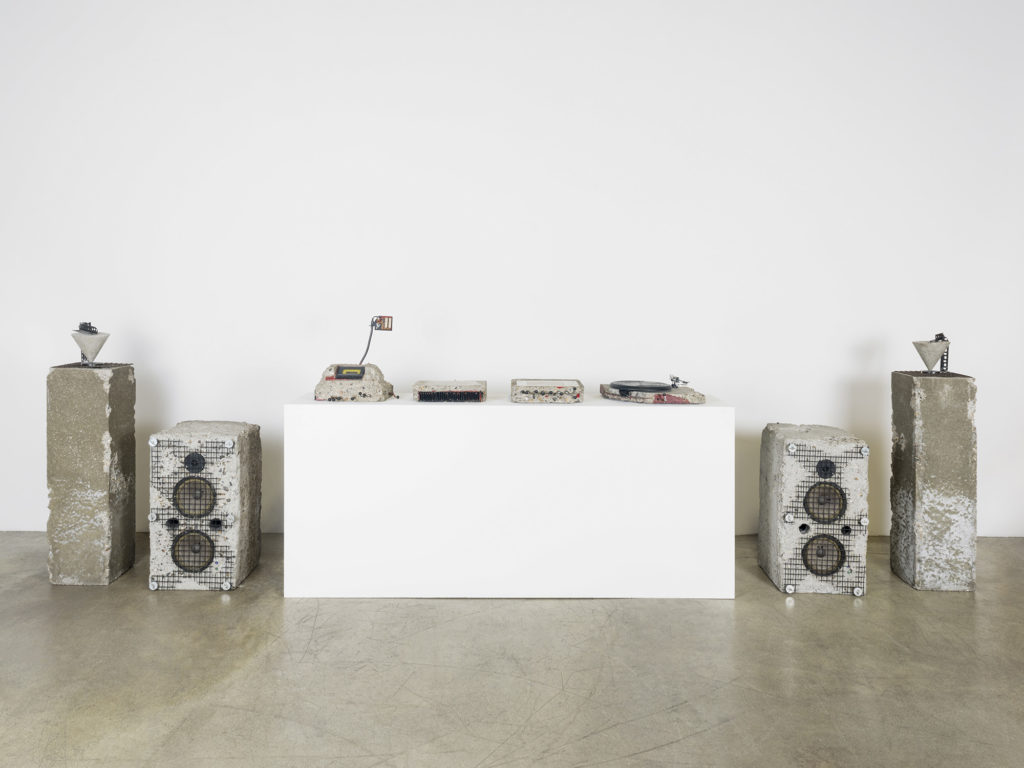
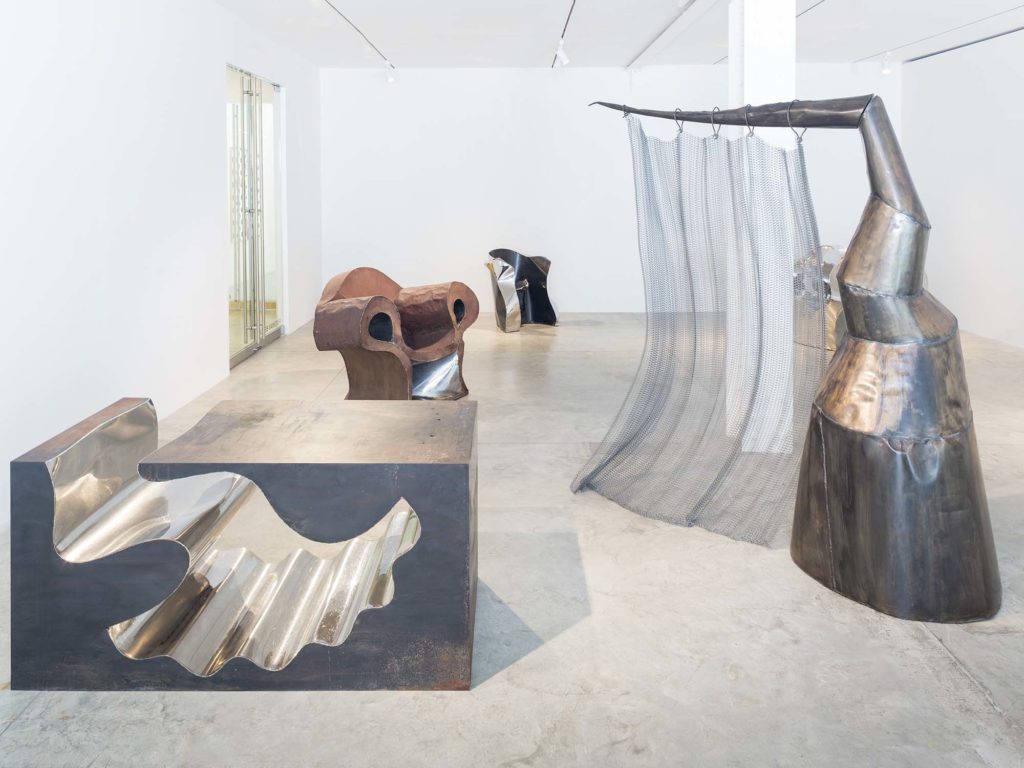
All these works of 1986-87 have an assertive physical presence, but essentially the metal is treated as if it were paper – he was not yet exploiting its malleability. This changed with the breakthrough Tinker chairs of 1988, and subsequent works of that year, including Italian Fish and the first works in the Big Easy series. Now, operating with fairly rudimentary tools – principally, a rubber hammer and a welding torch – Arad searched out his forms as he worked, stretching the metal in all directions: “I’d take a piece of steel and beat it until it admits it’s comfortable.”[6] The leap from two to three dimensions brought with it an extraordinary explosion of creativity. Though he did work from preparatory drawings (which were quite expressive in their own right and only provided the barest of indications as to contour) there was considerable scope for improvisation within each series. At first, he staged contrasts of surface and color, sometimes highlighting the seams of the chairs by executing them in polished stainless steel. “The welds became the memory of the drawings,” Arad later said. “It’s something you believe in at the time, at least until you discover you can remove the welds.”[7] As he came to grips with his new techniques, he gradually became dissatisfied with the crudeness of their process-based expressionism and started to finish them in an over-all mirror polish. Though this was extremely skill and labor intensive compared to any of his previous work, it achieved a spectacular combination of volumetric curvature and optical dazzle. The only real correlates for this work are, perhaps, the titanium-clad buildings of Frank O. Gehry. Their idioms developed from a very different structural logic – Arad’s work is more like a punk slam dance, Gehry’s like a ballet – yet both men successfully departed from the orthogonal logic of their disciplines, opening up wholly new formal paradigms.[8]
In retrospect, the gleaming surfaces of works like Wild Crow (1990) and Big Easy 2 for 2 (1989) seem a harbinger of Arad’s steadily increasing production values. The decisive turning point came in 1993, when he relocated manufacture out of his own London studio to a factory owned by Stefano Ronchetti, in the historic furniture production center of Cantú north of Milan; a year later he would begin collaborating on fabrication with Ernest Mourmans, the great Dutch patron of contemporary design. With this support, he was able to be more prolific, and also could take on even larger, more ambitious projects, and experiment with materials like polychromatic resins and Corian. The move repositioned him (both literally and figuratively) closer to Italian designers, who had always relied on the country’s artisanal workforce to realize their ideas. He was now established in the top echelon of design, with all the opportunity and attention that came with that position. Even the great Ettore Sottsass was impressed by Arad’s creations, as is evident from his description of encountering a Big Easy: “that immense rusted armchair, strange antique animal, strange fossil, probably from a generation destroyed by some meteorite… [it] was for me a huge shock, almost frightful.”[9]
Just as Arad’s early readymades had introduced existing aesthetic qualities into his objects, his collaboration with Ronchetti similarly incurred dependencies. When any artist or designer outsources production, there is a tradeoff: usually, more refinement and less urgency. The look and manner of Arad’s furniture changed, the surfaces far more consistent, the contours harder and more defined. Gone was the feeling of blow-by-blow discovery, and the atavistic energy that this had imparted. This tendency was amplified by his use of new technologies. Arad had always been technically adventurous, but in the 1990s and early 2000s innovative processes such as vacuum forming, digital fabrication, and superforming (heat-forcing a metal into a mold) became main events in his work.
Arad’s professional position shifted, as well. The Well Tempered Chair was followed up by several further commissions for Vitra, and before long Arad was working with other manufacturers too, including Cassina, Driade, Moroso, and Kartell. His Bookworm shelf was an anomalous best-seller, an extension of the thinking behind his “profile” pieces that became a genuinely affordable design classic. He was appointed head of product design at the Royal College of Art in 1997, instituting an influential platform-based structure that aimed toward competitive multiplicity of approaches, and helping to produce a generation of designers who are now among the leaders of the field.[10] He began taking on significant architectural commissions, beginning with the Tel Aviv Opera House (completed 1994) and arguably culminating in the Design Museum Holon, a building with the centripetal energy of an inside-out velodrome (completed 2010). And he received a one-man traveling retrospective starting in 2009 (shown at the Pompidou and the Museum of Modern Art, New York, with a related project subsequently at the Barbican in London). The exhibition title, No Discipline, implicitly endorsed the view of Arad as a “one off” in his own right, someone impossible to pin down on any spectrum, disciplinary or otherwise. Now that this enfant terrible of the design scene had come to constitute some kind of center, however, he was also a repeatable model for others to emulate.
In Fishes & Crows, we have the opportunity to return to Arad’s crucial breakthrough period, the moment when he was least constrained by external factors – dependent neither on the readymade nor on fabricators. The exhibition could not be better calibrated to the current energies of the design scene, which seem to converge at the junction of intensive craft and inventive form. In such a climate, Arad’s work of this period is essential, a fount of energy and immediacy that flows through studios worldwide. Encountering these prescient objects today feels like the opposite of looking into a rear-view mirror. They appear a lot closer to us in time than they actually are.
[6] Ron Arad Talks to Matthew Collings, p. 65.
[7] Sudjic, Ron Arad, p. 56.
[8] Gehry was developing this signature idiom right at this time, for the Weisman Art Museum in Minneapolis (completed 1993).
[9] Ettore Sottsass, “Leaving the Grotto,” in Ron Arad: One Off Three (London: Artemis, 1993), p. 6.
[10] See Christopher Frayling, “Ron Arad at the Royal College of Art,” in No Discipline, exhibition cat., Paris: Centre Pompidou, 2010.
This essay was originally published in exhibition catalogue Fishes & Crows, 1985-1994, Friedman Benda, NY, June 2018.
